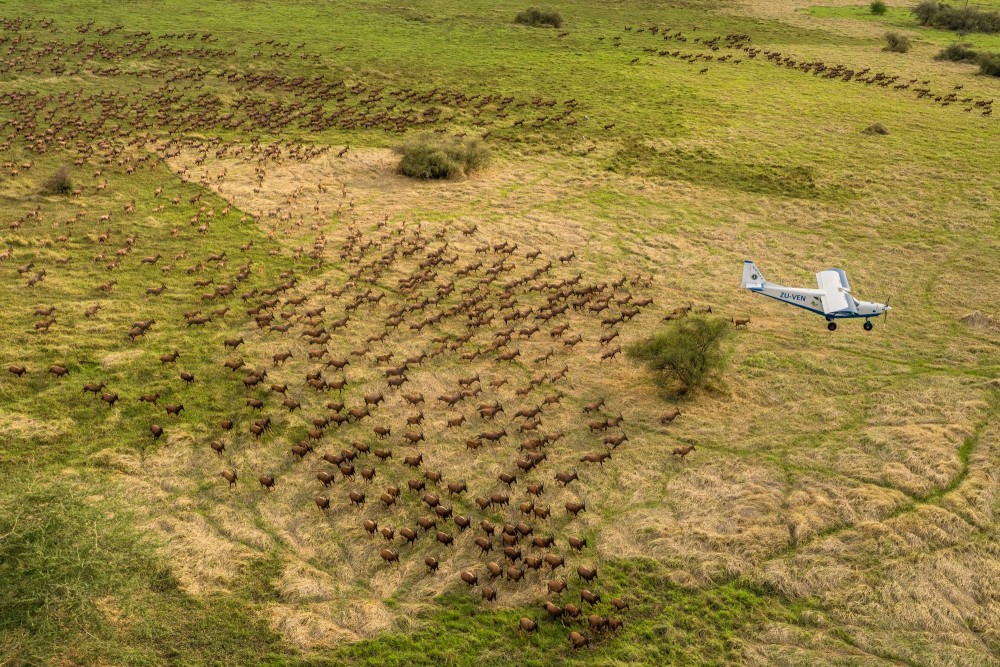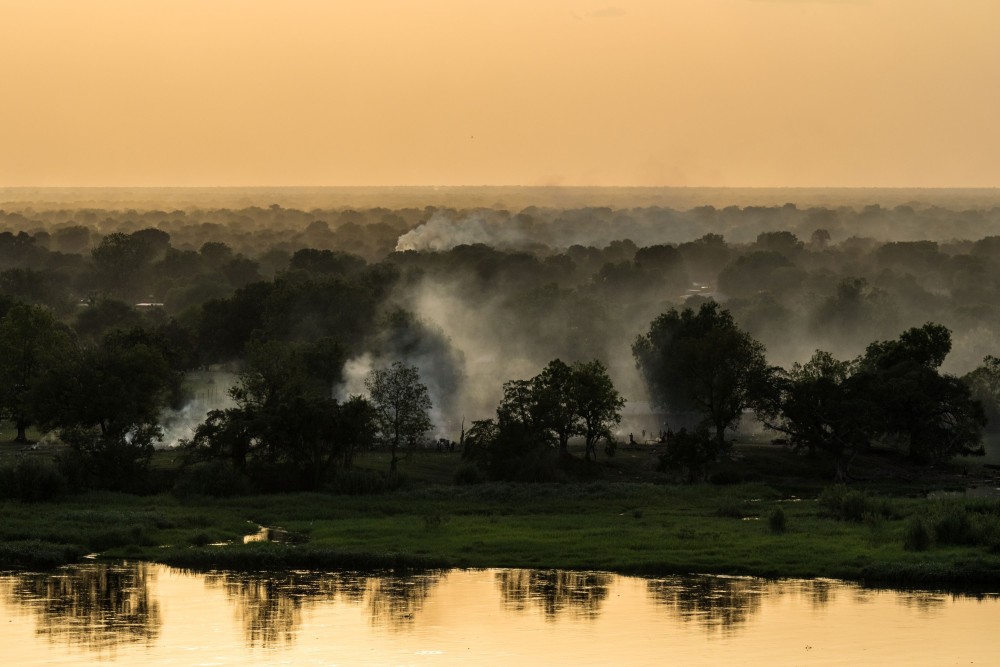Covering nearly three million hectares, Boma and Badingilo national parks form an integral part of a wilderness that spans as much as 200,000 square kilometres in South Sudan and neighbouring Ethiopia. The potential for biodiversity conservation at scale across this region is endless, but so too are the challenges. After decades of civil unrest, there is minimal infrastructure, with limited access across the landscape and until a few months ago, very little was known about the antelope migration or the status of other wildlife species across the two parks. The task of establishing an effective approach to manage biodiversity in a largely unknown landscape has been mammoth.
Boma National Park spans 19,189 km2 and falls within the Somali-Maasai and Sudano-Guinean biomes. The southern part of Boma is semi-arid, where the average rainfall ranges between 300-500mm and the soils are generally shallow and infertile. The vegetation of this area is characterised by extensive short grasslands and acacia bush. The eastern part of the park is covered with woodland dominated by Combretum and Ficus species, and the western flat plains are composed of open grassland.
A number of rivers run through or around Boma and several wetlands exist in and around the park. These habitats are largely seasonal, though permanent waterholes exist that act as dry season refuges for many species, as well as for human activity. The Juom Swamp is the largest of the wetlands and is found in the northern sector of the park. Besides being a reliable source of water, the wetland supports high value green biomass during the dry season, making it an important dry season range for wildlife, particularly white-eared kob.
Badingilo spans 8,935 km2 and falls within the Sudano-Guinean biome. Originally established in 1986 for the conservation of black rhino, which today is locally extinct, Badingilo was once renowned for its richness of large mammals including elephant, buffalo and lion. Despite its turbulent history, one of the largest annual land mammal migrations in Africa – hundreds of thousands of white-eared kob, Mongalla gazelle, tiang, and Bohor reedbuck moving across the land – has miraculously remained intact, while sedentary species are found in lower numbers.
Monitoring and Surveys

During the first few months, reconnaissance flights revealed that Boma- Badingilo is home to wildlife in numbers far greater than the most optimistic prediction.
Devising sustainable management practices to protect the area’s vast numbers of wildlife is only possible once their movements are clearly understood. To achieve this, 126 individuals from 12 different species were fitted with GPS tracking collars, among them Nubian giraffe, lion, cheetah, eland, elephant and buffalo, as well as the four species of migrating antelope.
Aerial surveys are currently establishing accurate estimates of wildlife population numbers. So far, herds of elephant, Nubian giraffe, common eland, Beisa oryx, Grant’s gazelle, Bohor reedbuck, lesser kudu, and ostrich, as well as abundant white-eared kob and Mongalla gazelle, have been found across the landscape. Herds of over 50,000 tiang have been observed moving together through both parks, confirming healthy and abundant populations in the ecosystem.
Conservation Law Enforcement

The challenges facing Boma-Badingilo are diverse. Badingilo is threatened by direct threats on species and habitat as well as its proximity to the national capital, Juba, and the town of Bor which exacerbates bush-meat poaching and coal burning in the human populated areas. African Parks identified several measures to counteract the threats of historical unsustainable management of natural resources and land use planning. Key among these is establishing the groundwork for effective park management. This includes creating a well-trained and equipped conservation law enforcement team to carry out monitoring, patrols and surveillance. Importantly, all these efforts are coordinated through close collaboration with local communities and regional authorities.
Rangers have been recruited from local communities, and have undergone the Basic Field Rangers course as well as specialised training to ensure the parks’ wildlife and ecosystems are protected. A control room has been established in Juba to monitor all movements throughout the parks. Communications have been set up in key locations, ensuring regular contact across the area.
Another approach that is being considered is the TANGO team approach – Transhumance Sensitisation Officers engaged from local communities – which is based on our experience in Chinko in the Central African Republic. The biggest impact will come from understanding the community and ethnic groups in the landscape, learning and engaging with them in order to establish the most sustainable approach to conservation in the area.
